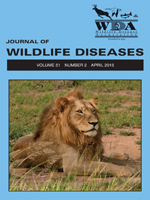White-nose syndrome (WNS) has had a devastating effect on North American bat populations. The causal agent of WNS is the fungal pathogen, Pseudogymnoascus destructans (Pd), which has been shown to persist in caves after the eradication of host populations. As nonpathogenic Pseudogymnoascus spp. display saprophytic growth and are among the most commonly isolated fungi from caves, we examined whether Pd could grow in cave sediments and the contribution such growth could have to WNS disease progression. We inoculated a range of diverse cave sediments and demonstrated the growth of Pd in all sediments tested. These data indicate that environmental growth of Pd could lead to the accumulation of spores above the estimated infection threshold for WNS, allowing environment-to-bat infection. The obtained growth parameters were then used in a susceptible-infected-susceptible mathematic model to determine the possible contribution of environmental Pd growth to WNS disease progression in a colony of little brown bats (Myotis lucifugus). This model suggests that the environmental growth of Pd would increase WNS infection rates, particularly in colonies experiencing longer hibernation periods or in hibernacula with high levels of organic detritus. The model also suggests that once introduced, environmental Pd growth would allow the persistence of this pathogen within infected hibernacula for decades, greatly compromising the success of bat reintroduction strategies. Together these data suggest that Pd is not reliant on its host for survival and is capable of environmental growth and amplification that could contribute to the rapid progression and long-term persistence of WNS in the hibernacula of threatened North American bats.
How to translate text using browser tools
1 April 2015
MODELING THE ENVIRONMENTAL GROWTH OF PSEUDOGYMNOASCUS DESTRUCTANS AND ITS IMPACT ON THE WHITE-NOSE SYNDROME EPIDEMIC
Hannah T. Reynolds,
Tom Ingersoll,
Hazel A. Barton
ACCESS THE FULL ARTICLE

Journal of Wildlife Diseases
Vol. 51 • No. 2
April 2015
Vol. 51 • No. 2
April 2015
Bat populations
cave fungi
disease model
environmental growth
extirpation
Pseudogymnoascus destructans
white-nose syndrome




